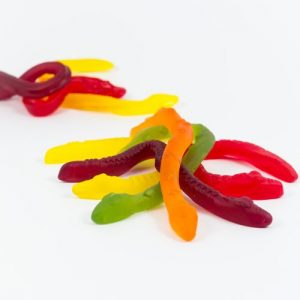Just start!
It is not uncommon to give a student a writing task, and now faced with a blank page, their minds also go blank and creativity seems a far off concept. Despite suggestions by Cameron (1998) and Virtue (2016), that all are creative, these students would testify against this idea. They just can’t seem to start. The suggestion that they ‘just start’, seems as ludicrous as asking someone with no money, to buy something. They could very well turn to the teacher and declare, I’ve got nothin’.
‘Just start.’
‘How?’
I also believe we are all creative in some way, but my belief gives little help to those faced with the blank page, with their minds as blank as the page in front of them. The blank-page student will often declare they are thinking, though I suspect their thinking at that moment is, ‘I don’t know what to write, I don’t know what to write, I don’t know what to write,’ or it is some kind of flat-line absence of thought, and they are not exploring their imagination for unicorns drinking from glittering streams in a fantasy forests.

The Mindfulness/Creativity connection
Does the answer lie in awareness? Being aware of what you are thinking? Aware of what surrounds you? The countless non-verbal experiences that are had every day? Cameron (1998) and Virtue (2016) draw a correlation between those who are emotionally aware, an individual’s sense authenticity, and their freedom of expression.
Daniel Siegel (2009) describes a case study where he helped an older client unlock the non-verbal experiences that were trapped in his right-brain; the place of creativity, ideas and recorded experiences, but has no language. This was a long-term approach of journal keeping and descriptions of non-verbal experiences. He uses the example of eating breakfast: More than, ‘I ate my cereal’, but to describe opening the box, the sound of the cereal going into the bowl, to describe the swish of the milk being poured on them, and then the feeling of it within your mouth and the sensation of eating. This is mindfulness, and is similar to the exercise that I am about to describe.
Acceptance and Commitment Therapy – the key
As an ACT therapist (Acceptance and Commitment Therapy), I have long suspected that this therapy approach has much to offer in assisting students within the classroom. Students need help in developing awareness of their own thinking, and what they are actually experiencing, rather than being caught up in the-moment-by-moment-he-said-she-said events; a bit like a small twig in a fast-flowing stream. Is there boundless creativity and imagination waiting for the right key to escape and become a reality?
Earlier this year I completed an on-line course called ACT for Adolescence (Harris, 2017), a course that I highly recommend. Whilst a mindfulness activity for adults might mean paying attention to your breathing, teens need something more experiential. Harris demonstrated with an adolescent participant, the practice of mindfulness while eating a jelly snake. To smell it, feel it, taste it, hold it in your mouth, be aware of the sensation while resisting to chew, then to chew without swallowing, and so on – this is a rich mindfulness experience.

Mindfulness Writing
I set out to apply this exercise with a student who had experienced difficulty with creative writing. Starburst jelly snakes. We smelt, we tasted, we experienced, we wrote down words. Words became phrases, descriptions flowed. We used a thesaurus to extend our vocabulary and find more words. Having completed that task, we moved onto the next flavour filled food item, Salt and Vinegar chips. More words flowed as we licked, and then held them in our mouths and tried not to chew. A delightful moment came when I opened a packet of something and my student instructed me to wait, while they felt the packet and described the experience and then opened it slowly and smelled the aroma. Now my student was teaching me to savour the moment. I think I was in a rush to start writing, but writing takes time and you need to pay attention first.
Don’t give up on your blank-page students. Help them to experience the world that just beyond their awareness.
References
Cameron, J., (1999), The right to write; an invitation and initiation into the writing life. Tarcher/Penguin, New York.
Harris, R., (2017), ACT for adolescence. https://imlearningact.com/act-courses/
Sigel, D, J., (2009), Mindsight; changing your brain and your life. Scribe Publications Pty Ltd, Brunswick.
Virtue, D., (2016), The courage to be creative; how to believe in yourself, your dreams and ideas, and your creative career path. Hay House Inc. Sydney.
About Gwen
Gwen is a school teacher, counsellor, author and presenter. Gwen’s counselling practice caters particularly for children, adolescents, teachers and parents, as well as generalised counselling. She works with individuals in relation to mental health and wellbeing. Gwen is the author of Bully Resilience: Changing the Game. See www.equipcc.com.au for more information.


Recent Comments